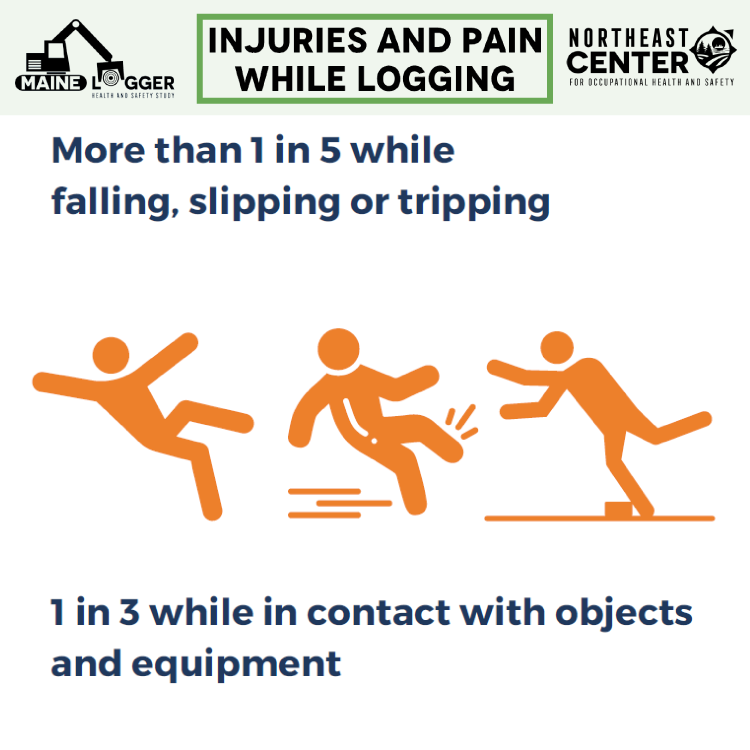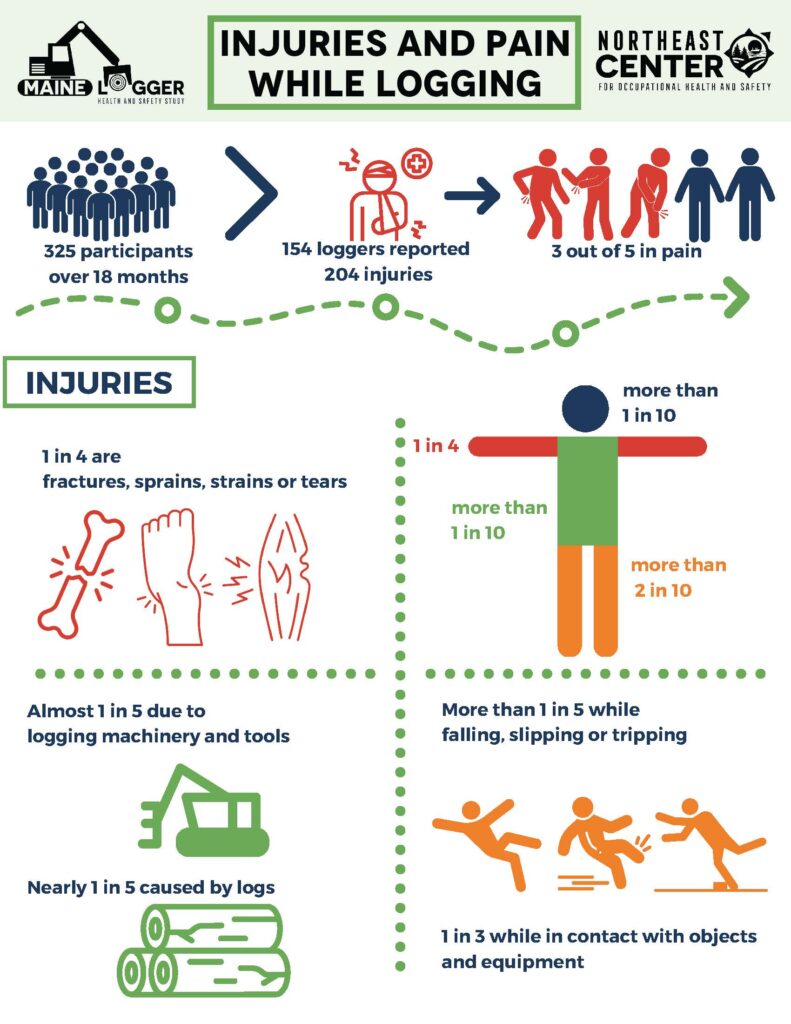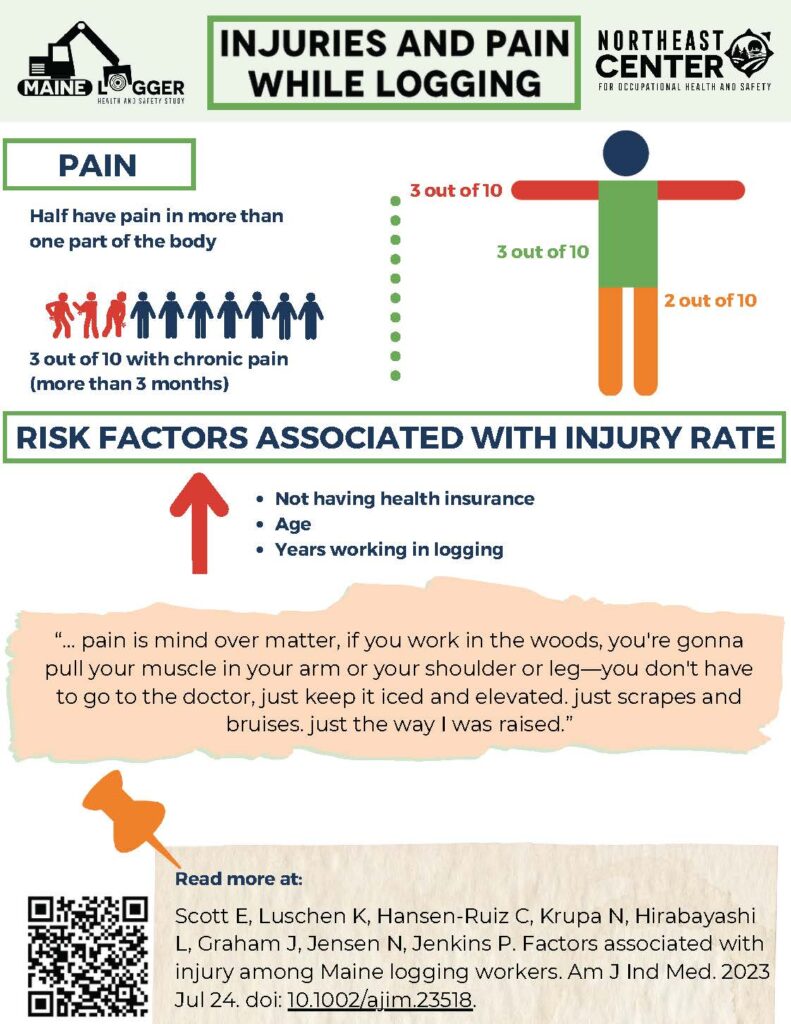The Northeast Center for Occupational Health and Safety (NEC) recently published results from a longitudinal study that examines injury trends within the Maine logging community. The NEC has been studying the impact of work on health and safety within the Maine logging industry over the past decade. As one of the most dangerous occupations in the United States, this study sought to understand injury patterns among this cohort. Data was collected through seven quarterly surveys over 18 months, whereafter, they were analyzed quantitatively and qualitatively.
The findings revealed that many loggers experience work-related injuries, some resulting in long-term chronic pain. Pain is a long-time companion for this group, with 60% of participants reporting musculoskeletal pain on at least one survey, with one-third of those (33%) reporting chronic pain. Many injuries were due to slips, trips, and falls (23%) or coming into contact with equipment (29%), and 16% resulted from contact with trees and logs. Working in changing natural environments while facing unpredictable weather and business pressures contributed to reported injuries. Additionally, a relationship was found between the age of a logger and years in the industry, wherein younger workers tended to have a lower risk of injury. Still, the risk for uninsured loggers was elevated regardless of age. This indicates a possible association between quality of insurance coverage and risk-taking behavior.
As a largely rural community, access to health care can be challenging to find for loggers, and frequently involves a more significant investment of time due to travel distances. When care was accessible, high cost was consistently cited as a reason loggers chose not to pursue medical care. This is particularly relevant to uninsured loggers, as lacking health insurance is a risk factor for increased injury. Exacerbating this effect, narratives focused on independence and traditional forms of masculinity, which emphasize toughness and the ability to “stick it out”. While many consider this mentality admirable, it can contribute to chronic pain and injury over a logger’s lifetime.
Ultimately, this information tells us what the logging community already knows: there is a need to emphasize and further occupational health and safety goals in this field. Much of this must be accomplished through transdisciplinary research involving loggers and researchers working together to craft practical and approachable solutions.
The full text of this paper is available online here.
A PDF version of this press release is available here.




